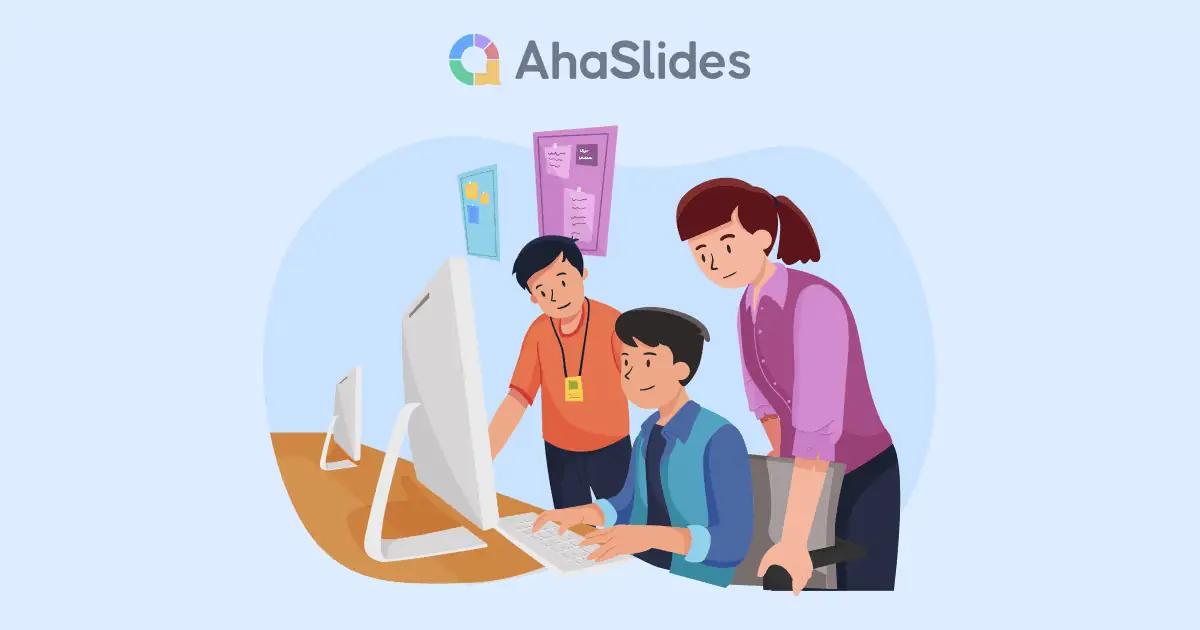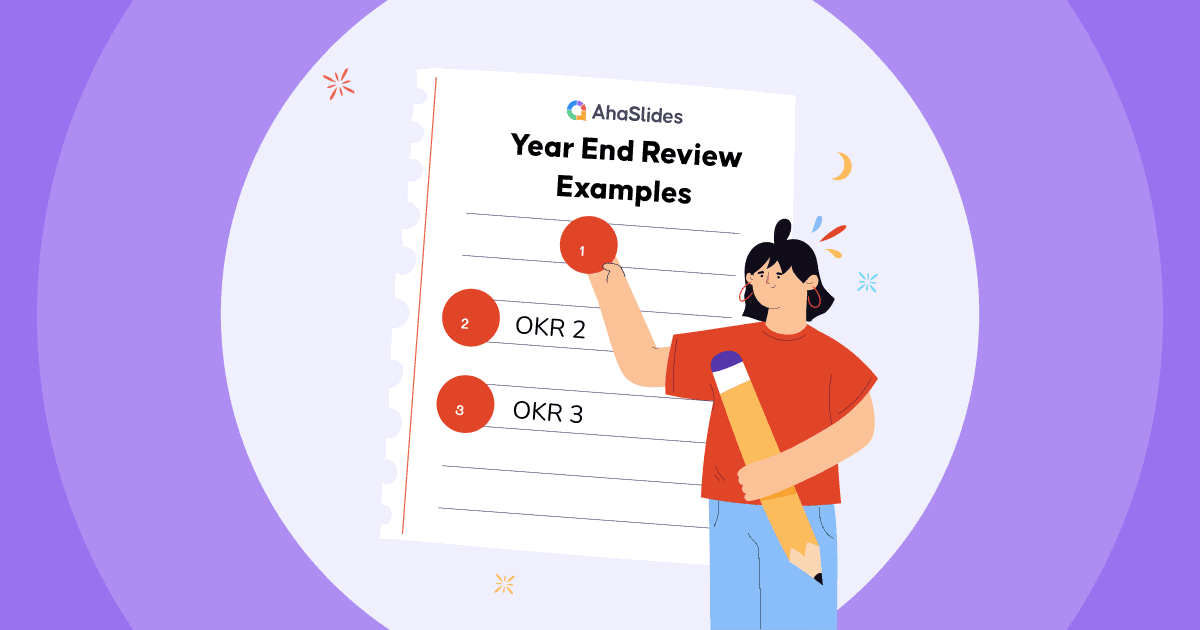車の値段交渉、昇給交渉、あるいは露天商との土産物の値段交渉など、様々な場面で交渉を強いられた経験はありませんか?もしそうなら、あなたは 分配交渉、固定リソースの分割に焦点を当てた基本的な交渉戦略。
このブログ記事では、分配的交渉とは何か、その日常的な事例、そして統合的交渉との違いについて考察します。また、分配的交渉においてより効果的な交渉者になるために役立つ、重要な戦略と戦術についても深く掘り下げていきます。
目次

エンゲージメントを高めるためのヒント

集会中の楽しみをもっとお探しですか?
AhaSlidesの楽しいクイズでチームメンバーを集めましょう。AhaSlidesテンプレートライブラリから無料のクイズにサインアップしてご参加ください!
🚀無料クイズをつかむ☁️
分配交渉とは何ですか?
分配交渉は、XNUMX つ以上の当事者が固定または限られたリソースを分割することを目的とした交渉戦略です。 これを、ピザをスライスに分割する必要があり、誰もがより大きなピースを望んでいるシナリオとして考えてください。 分配的交渉では、自分にとって可能な限り最良の取引を獲得しようと努めながら、自分のパイの取り分を最大化するという考え方があります。
簡単に言えば、誰が何を得るかをめぐる綱引きのようなものです。この種の交渉はしばしば利害の対立を伴い、一方が得をすれば、もう一方が損をする可能性があります。これは勝ち負けの状況であり、一方が得をすればするほど、もう一方が得るものは少なくなります。
分配的交渉と統合的交渉
分配交渉 市場で価格交渉をしたり、雇用主と昇給の交渉をしたりするなど、自分の取り分を主張することがすべてです。 あなたが得れば得るほど、相手が受け取るものは少なくなります。
統合交渉、 一方、市場を拡大することに似ています。 あなたと友達がピザを XNUMX 枚持っていると想像してください。ただし、ペパロニ、マッシュルーム、チーズなどの追加のトッピングもあります。 既存のピザをめぐって争うのではなく、好みのトッピングを加えてより良いピザを作るために協力します。 統合交渉は、双方が協力して全体の価値を高める創造的な解決策を見つける、双方にとって有利なアプローチです。
つまり、一言で言えば、分配的交渉は固定されたパイを分割することですが、統合的交渉は相互に有益な解決策を見つけてパイを大きくすることです。

分配交渉の例
分配的交渉をより深く理解するために、この交渉戦略が適用される実際の例をいくつか見てみましょう。
#1 – 給与交渉
面接で、採用候補者と給与について話し合っているところを想像してみてください。あなたはより高い給与を望み、企業は人件費を抑えたいと考えています。これは分配交渉の典型であり、両者は固定された資源、つまりあなたのポジションに対する会社の予算をめぐって争っています。交渉が成功すれば給与は上がりますが、他の福利厚生や特典が犠牲になる可能性があります。
#2 – 車の購入
ディーラーで車を購入する際、多くの場合、価格交渉が行われます。お客様は可能な限り低価格を望み、販売員は利益を最大化したいと考えています。交渉は車の価格を中心に展開されるため、双方が納得できる妥協点を見つけるのは難しい場合があります。
#3 – 離婚の和解
夫婦が離婚する場合、財産の分割は分配交渉の典型的な例となる可能性があります。 両当事者は、不動産、貯蓄、投資などの共有資産から可能な限り多くの利益を得ることに関心を持っています。 この交渉は、法的枠組みと各配偶者の利益を考慮して、これらの資源を公平に分配することを目的としています。
これらの各例では、分配交渉には、当事者が有限または限られたリソースの取り分を最大化するよう努力することが含まれます。
分配交渉の戦略と戦術

資源が限られており競争が激しい分配的交渉においては、綿密に練られた戦略と効果的な戦術を用いることが、望ましい結果を達成する上で大きな違いを生む可能性があります。このタイプの交渉で用いられる主要な戦略と戦術を詳しく見ていきましょう。
#1 – 自分の立場を固定する
最初のオファーは、交渉の方向性を左右するアンカーとして機能することがよくあります。売り手側であれば、高い価格から始め、買い手側であれば、低い価格から始めましょう。これにより、交渉の雰囲気が整い、譲歩の余地が生まれます。
#2 – 予約ポイントを設定する
自分が受け入れ可能な最低または最高のオファー額、つまり「留保ポイント」は、自分の中で秘めておきましょう。あまりに早く明かしてしまうと、相手にあなたの限界を知られてしまい、有利な立場に立たせてしまう可能性があります。
#3 – 戦略的な譲歩をする
譲歩するときは、選択的かつ戦略的に行ってください。 あまりにも早くあまりにも多くのものを与えることは避けてください。 段階的な譲歩は、自分の立場を維持しながら柔軟性を示すことができます。
#4 – ひるみを使う
オファーが提示されたら、雇用する ひるむ戦術。 驚きや懸念の反応を示し、相手に自分たちの申し出の公平性に疑問を抱かせます。 これにより、提案を改善するよう促される可能性があります。
#5 – 情報は力なり
交渉の主題と相手の立場を徹底的に調査しましょう。知識は分配的交渉において貴重な武器となります。より多くの情報があればあるほど、効果的な交渉を行うための準備が整います。
#6 – 締め切りを設定する
時間的なプレッシャーは有効な戦術となり得ます。例えば契約交渉の場合、契約締結の期限を設定することで、相手はより迅速な意思決定を迫られ、結果的に有利になる可能性があります。

#7 – 限定的な権限を使用する
決定権が限られていると主張する。これは、自分が最終決定権者ではないという印象を与えるため、強力な戦術となり得ます。相手は、より権限のある人物からの承認を得るために、より多くの提案をしてしまう可能性があります。
#8 – 善良な警官、悪徳警官
チームで交渉する場合は、「善玉警官」と「悪玉警官」のアプローチを検討してください。一方の交渉者が強硬な姿勢を取り、もう一方の交渉者がより融和的な姿勢を見せます。これにより混乱が生じ、譲歩を促しやすくなります。
#9 – 必要なら立ち去る
相手があなたの最低条件を満たす意思がないことが明らかな場合は、交渉から離脱する準備をしておきましょう。交渉のテーブルを離れることが、時には最も効果的な戦術となることもあります。
主要なポイント(要点)
分配的交渉は、あなたの武器となる貴重なスキルです。フリーマーケットでの値引き交渉、昇給交渉、あるいはビジネス取引の締結など、分配的交渉の戦略と戦術を理解することで、あなた自身や組織にとって最良の結果を確保することができます。
交渉スキルを磨いたり、インパクトのあるプレゼンテーションを行ったり、営業チームを成功に導くためのトレーニングを行ったりする場合でも、 あはスライド 成功への道をサポートします。 私たちのコンテンツを次のレベルに引き上げましょう インタラクティブテンプレート さまざまなニーズや業種に対応します。 聴衆はあなたに感謝するでしょう。
よくある質問
分配的交渉と統合的交渉とは何ですか?
分配交渉: これはパイを分けるようなものです。政党は一定の資源をめぐって競争し、一方が得をすれば、もう一方が損をするかもしれません。これはしばしば勝ち負けの関係として捉えられます。
統合的な交渉: これをパイの拡大と考えてください。当事者は協力して創造的な解決策を見つけ、交渉中の資源の全体的な価値を高めます。これは通常、双方にとってメリットのあることです。
分配的交渉は双方に利益をもたらしますか?
分配的交渉は一般的にwin-winの関係ではありません。多くの場合、一方の利益がもう一方の損失となるような、win-loseのシナリオにつながります。
Ref: エコノミック·タイムズ | アメリカンエキスプレス








